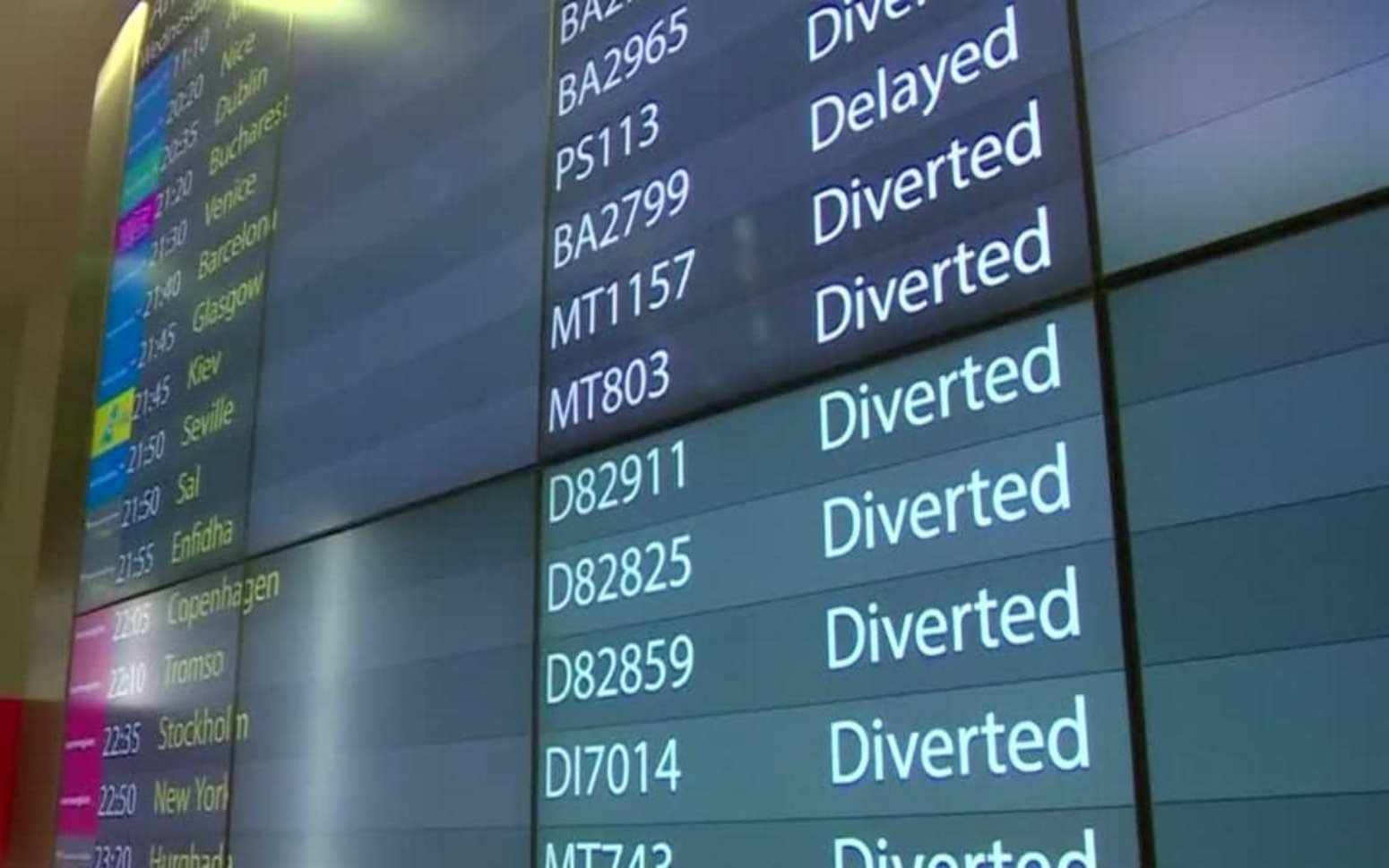
Egg continues to congeal on the faces of officials involved in the notorious 2018 Gatwick Airport drone controversy – an enduring flap that may explain why a recent report of the “deliberate obstruction” of an approaching plane by a UAV in the restricted airspace wasn’t exactly shouted to the rooftops.
The incident occurred on the afternoon of February 26, when an A321 passenger plane preparing to land at London’s Gatwick Airport came within 40 feet of a drone that crew members described as “black with yellow stripes and no lighting.” With the jet descending fast in full landing mode, pilots were unable to make any maneuvers to avoid the craft, and watched it blast by flying in the opposite direction below them. Gatwick flight controllers deemed the presence of the drone – and crew description of its “deliberate obstruction” of their approach – sufficient grounds to halt flights in or out until they’d obtained radar evidence the UAV was gone some 19 minutes later.
That account was contained in a report by the UK Airprox Board – the department of the UK’s Civil Aviation Authority that investigates near-miss incidents – which has seen the number of cases involving drones on the rise in the past few years. Its ruling on the February Gatwick encounter said the “reported altitude and/or description of the object were sufficient to indicate that it could have been a drone,” which had created a situation “where safety had been much reduced below the norm to the extent that safety had not been assured.” It termed the risk of collision as “high,” but rated the case as a B threat, rather than maximum A.
Read more: Yet another UK near-miss between drone an aircraft
So why were Gatwick officials so discreet in handling the drone incident – which, after all, resulted in suspension of flight traffic?
Probably to avoid headlines like “Terrifying moment plane at Gatwick was at ‘high’ risk of hitting drone just 40ft away” and “Plane was at ‘high’ risk of hitting ‘large’ drone just 40ft away” run by UK media that got word of the incident. Those made authorities’ aversion to broadcasting the event understandable – as would any memories of 2018.
In December that year, reported sightings of over 100 drone flights in Gatwick’s restricted airspace spanning three days led authorities to cancel more than 100,000 flights, stranding some 140,000 Christmas season travelers. Despite the enormous disruption the precaution provoked, police never manage to finger any pilots or UAVs responsible for the purported violations – at first.
Days after traffic resumed, however, armed cops stormed the home of a local couple they subsequently charged with “criminal use of drones” in the affair. The pair sued for wrongful arrest, won over $250,000 in compensation, and later made public accusations the police were covering up their own ineptitude when an official report on the Gatwick debacle was not made public.
Read more: Gatwick drone incident update: Wrongly arrested couple says police are covering up failure
Given the no-contact, no-harm outcome of February’s near-miss incident, therefore, it may well be Gatwick managers, the local constabulary, and aviation authorities decided discretion trumped absolute transparency on the still sensitive matter of drones illegally visiting London’s second airport. Given the blaring headlines of media that caught wind of the UK Airprox Board ruling, it’s hard to blame them.
FTC: We use income earning auto affiliate links. More.



Comments